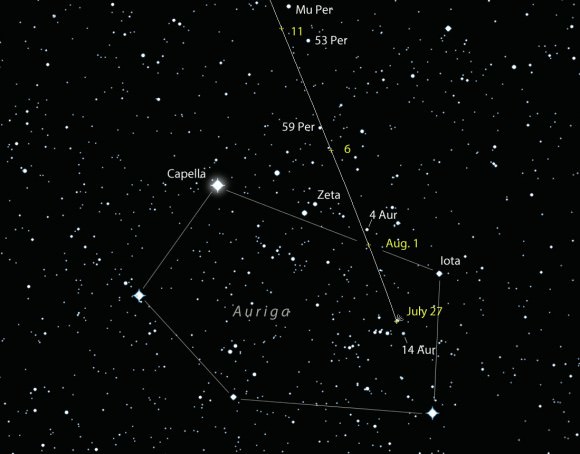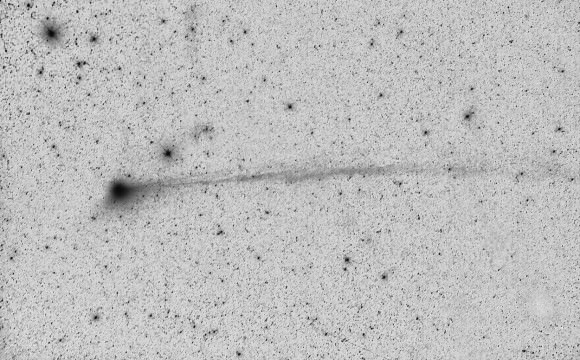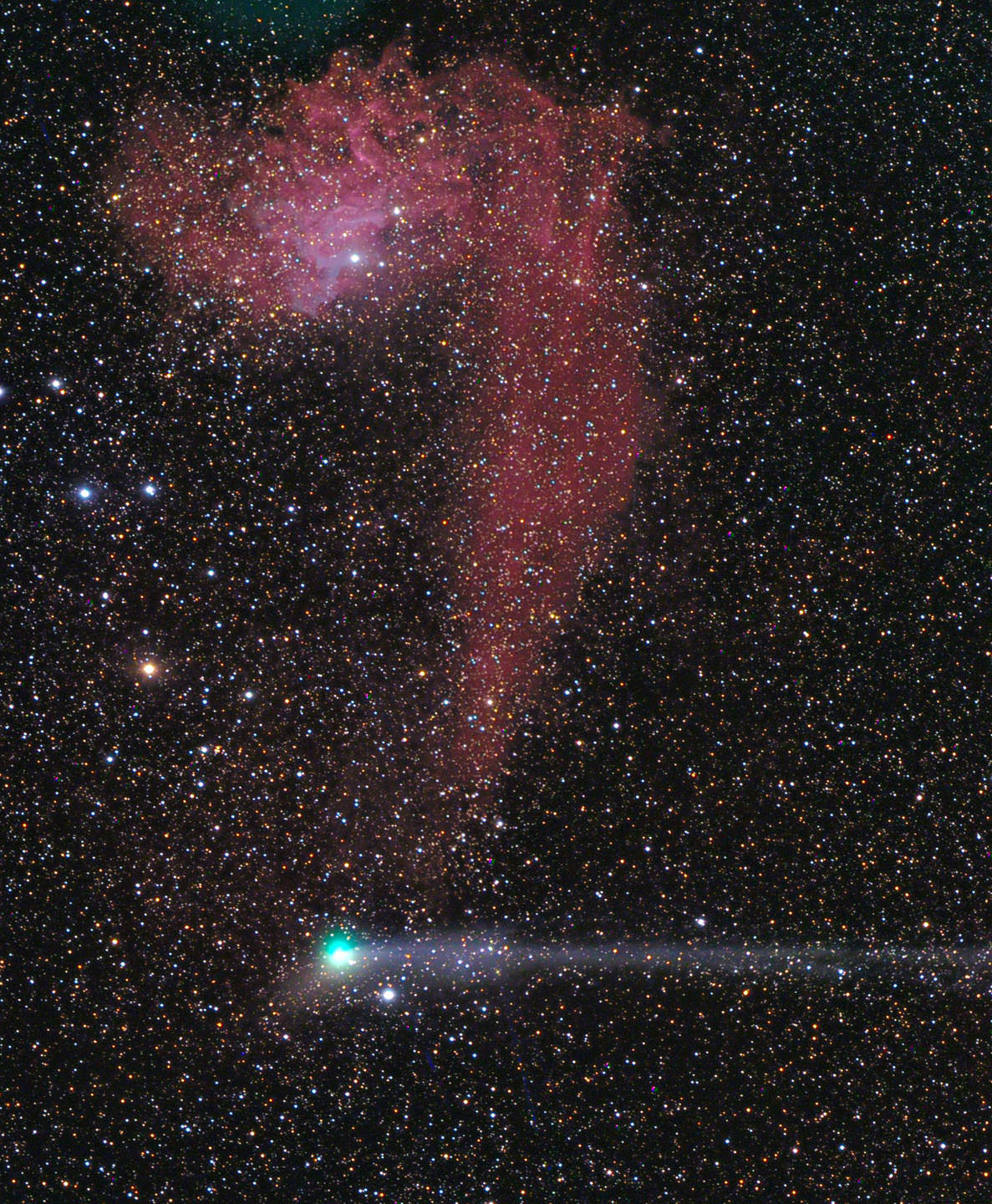What an awesome photo! Italian amateur astronomer Rolando Ligustri nailed it earlier today using a remote telescope in New Mexico and wide-field 4-inch (106 mm) refractor. Currently the brightest comet in the sky at magnitude 6.5, C/2014 E2 Jacques has been slowly climbing out of morning twilight into a darker sky over the last two weeks. This morning it passed the Flaming Star Nebula in the constellation Auriga. Together, nebula and pigtailed visitor conspired to ask a question of the sky in a rare display of celestial punctuation. IC 405 is a combination emission-reflection nebula. Some of its light stems from starlight reflecting off grains of cosmic dust, but the deep red results from hydrogen excited to fluorescence by powerful ultraviolet light from those same stars. The depth of field hidden within the image is enormous: the nebula lies 1,500 light years away, the comet a mere 112 million miles or 75 million times closer. Coincidentally, the comet also glows in similar fashion. The short dust tail to the left of the coma is sunlight reflecting off minute grains of dust boiled from the nucleus. The long, straight tail is primarily composed of carbon monoxide gas fluorescing in ultraviolet light from the sun.

As Jacques swings toward its closest approach to Earth in late August, it’s gradually picking up speed from our perspective and pushing higher into the morning sky. A week ago, twilight had the upper hand. Now the comet’s some 20º high (two ‘fists’) above the northeastern horizon around 4 a.m. This morning I had no difficulty seeing it as a small, ‘fuzzy star’ in 10×50 binoculars. In my dusty but trusty 10-inch (25 cm) telescope at 76x, Comet Jacques was a dead ringer for one of those fuzzy dingle-balls hanging from a sombrero. I caught a hint of the very short dust tail but couldn’t make out the gas tail that shows so clearly in the photo. That will have to await darker skies.

Maybe you’d like to try your own eyes on Jacques. Start with a pair of 40mm or larger binoculars or small telescope and use the map above to help you spot it. Oh, and don’t forget to keep an exclamation mark handy when you get that first look.


Month long fog, clouds and/or marine layers here… FINALLY getting some clear mornings? Thanks for the heads up!
You’re welcome Aqua4U. Good luck! You’ll see it no problem once your sky clears.